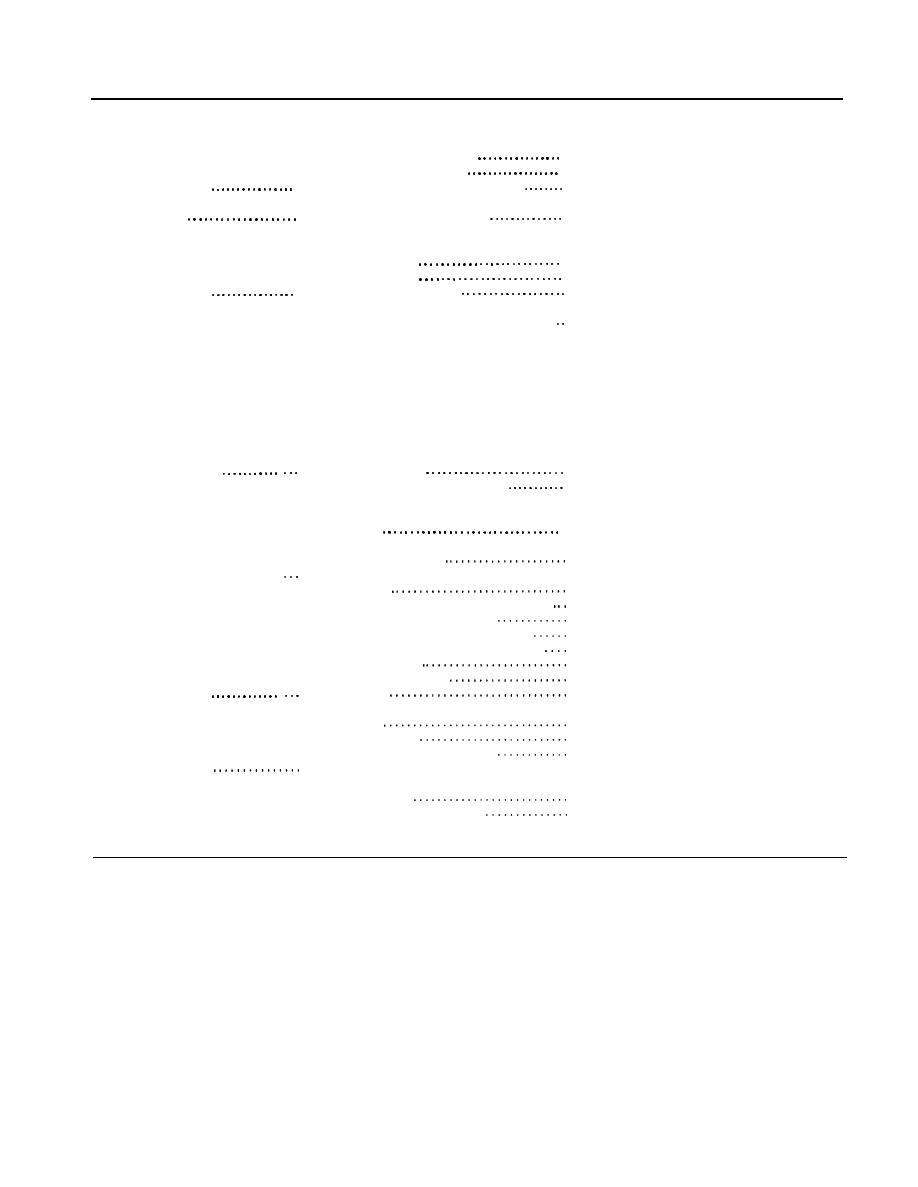

Custom Search
|
|

|
||
 TM 5-684/NAVFAC MO-200/AFJMAN 32-1082
Table 11-2. Troubleshooting chart for general control equipment (continued)
Course of action
Cause
Trouble
Keep ferrules and clips clean. Use plated clips
2. Heating at ferrle contacts, corrosion or oxi-
and ferrules; replace annealed clips.
dation of ferrules and clips..
Provide adequate pressure.
3. Weak contact pressure.
Check application.
1. Wrong size of fuse for application.
Too slow blowing.
TRANSFORMERS:
Check load on transformer and system voltage.
1. Overcurrent or overvoltage.
Overheating.
Failure of other devices to operate properly.
2. Intermittent-rated unti left on continu-
ously.
Relocate transformer or reduce load.
3. High ambient.
Replace coil.
4. Shorted turns.
See insulation failure.
1. See insulation failure.
Insulation failure
These causes are similar to those listed under
MASTER, SELECTOR, LIMIT,
See contacts, mechanical parts, and insulation
SPEED, FLOAT, FLOW, PRESSURE, contacts, mechanical parts, and insulation.
failure.
KNIFE, AND DRUM SWITCHES;
PUSH BUTTONS. MANUAL
CONTACORS, RHEOSTATS:
See contacts, sliding contacts, mechanical
These causes are similar to those listed under
MANUAL STARTERS:
parts, insulation failure, and thermal overload
contacts, sliding contacts, mechanical parts,
insulation failure, and thermal overload re-
lays.
MOTOR STARTER CIRCUIT
BREAKERS:
Reset or increase trip setting.
1. Setting too low.
Premature tripping
Check load and current peaks against setting.
2. Repetitive closing and jogging.
3. Undervoltage device and control circuit
and auxiliary pilot devices affected by operat-
Check circuits.
ing circuit.
Replace circuit breaker.
4. Incorrectrating. . . . . . . . . . . . . . . . . . . . . . . . .
See circuit breakers instructions. Check and
1 Incorrect adjustment
Failure to latch in or open and
adjust parts.
reset.........................
Replace parts.
2. Worn parts
Replace circuit breaker.
3. Excessive currents causing contact wear
Check circuits.
4. Fault in remote control circuit
Readjust.
5. Door mechanism out of adjustment.
Replace parts.
6. Trip element or mechanism damaged.
Clean.
7. Corrosion or dirt
Replace parts.
8. Arc chutes damaged.
Check starting current, reduce duty cycle.
1. Corrosion.
Short contact life
2. High currents and frequent operation caus-
Check starting current, reduce duty cycle.
ing burning.
Refer to manufacturer.
3. Misapplication.
Do not file contacts.
4. Excessive filing and dressing.
Reduce currents.
1. High inrush currents during motor start-
Welding of contacts
ing. . . . . . . . . . . . . . . . . . . . . . . . . . . . . . . . . . . . . . . .
Use suitable contactor.
2. Rapid jogging.
Frequent inspection.
3. Incomplete manual closure.
Renew contacts.
4. Inadequate maintenance for renewal of
contacts. . . . . . . . . . . . . . . . . . . . . . . . . . . . . . . . . . .
11-13
|
 
|
|
 |
||